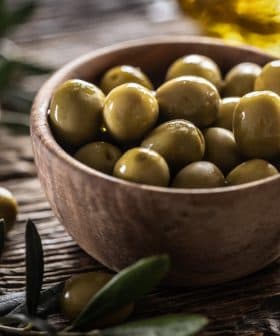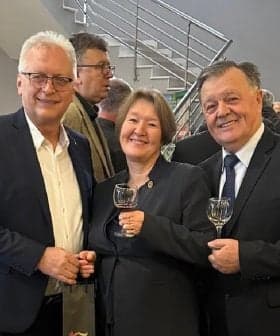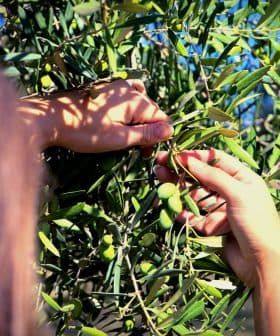European Union Expands Monte de Etna PDO Territory in Sicily
The expansion means the potential production of Monte de Etna PDO extra virgin olive oil could double.
 Mont Etna
Mont Etna The European Union has expanded the Monte Etna PDO in Sicily to include more municipalities, increasing the potential production area and number of farms eligible for certification. Changes in acidity levels due to climate change have led to adjustments in the PDO rules, providing more local producers the opportunity to market their extra virgin olive oils as Monte Etna PDO.
The European Union has expanded the territory of the Monte Etna PDO in Sicily, allowing more growers, millers and bottlers to label their extra virgin olive oil with the geographical indicator.
Previously, only 18 Sicilian municipalities located on the western slope of Europe’s tallest active volcano were eligible for the Protected Designation of Origin certification.
Our extra virgin olive oil is the son of a wonderfully unstable territory. Etna is an active volcano and that envelops olive growing in feelings and biodiversity which are completely unique.
“It took us almost 10 years to have the certification include the full territory of another 25 municipalities on the eastern side of Mount Etna,” Giosué Catania, president of the Monte Etna PDO Consortium, told Olive Oil Times.
According to the consortium, the new rules expand the potential production area of the Monte Etna PDO from 750,000 olive trees on 5,500 hectares to more than one million on 7,300 hectares. As a result, the number of farms and producers potentially affected by the change will rise from 4,500 to approximately 5,800.
See Also:Value of PDO and PGI Olive Oil Production Drops in Italy“If we are talking about the potential PDO extra virgin olive oil production, we estimate that under the new rules, it could reach between 1.5 and 1.8 million liters and an overall turnover of €15 to €17 million,” Catania said.
While the PDO area is now significantly larger, not all farms and companies will necessarily be interested in following the steps necessary to receive the Mont Etna PDO certification.
“Under the old criteria, we have 46 members in the production chain with approximately 200 hectares of certified production area and more than 45,000 liters of certified PDO production,” Catania said.
One of the challenges producers in the Monte Etna PDO area faced when trying to adhere to the old criteria or to retain their status as PDO-certified producers has been climate change, which has impacted the acidity levels of their extra virgin olive oils.
More specifically, it has slightly increased linoleic and linolenic average acidity. Such phenomenon is expressly cited by the E.U.-approved new disciplinary.
“These two markers need to be changed because a growing number of batches of oil from the area covered by the Monte Etna Protected Designation of Origin have failed to obtain certification in recent years due to having a higher linoleic acid and linolenic acid content than the values currently set in the product specification,” the E.U. wrote.

Harvesting olives for Monte Etna PDO olive oil in Sicily
“Studies show that this is linked to the increase in average temperatures and the significant drop in rainfall that has taken place in recent years, altering the acidity profile of Monte Etna oil,” they added.
Therefore, the maximum levels of both acids have been raised with the new rules. As a result, acceptable linoleic acidity rose from a maximum of 10 percent to 13.5 percent and linolenic from 0.8 percent to 0.9 percent.
“Of course, it does not affect in any way the quality of the resulting extra virgin olive oil and both levels are way below those found in many other PDOs disciplinary,” Catania said.
The most relevant consequence of such changes is the opportunity that they open up for more local producers to add value to their extra virgin olive oils and market them as Monte Etna PDO.
Monte Etna PDO is an extra virgin olive oil primarily made from the Nocellara Etnea variety, which must constitute at least 65 percent of the total volume, according to the PDO rules.
See Also:Greece Registers Four PDO and PGI Olive Oils as Intellectual PropertyAmong the most interesting characteristics of those trees are their larger-than-average yields and the possibility to grow them at higher altitudes.
“We live in a mountainous territory, and that means growing olives at 900 or even 1,000 meters above sea level in a sunny breezy and proper Mediterranean climate, which adds to the identity of this product,” Catania said.
“Our extra virgin olive oil is the son of a wonderfully unstable territory,” he added. “Etna is an active volcano and that envelops olive growing in feelings and biodiversity which are completely unique.”
Catania added how olive farming in such a challenging environment is considered an example of “heroic agriculture,” a term coined to describe farming in areas where the land is too steep or too remote for mechanical assistance.
Such characteristics impact production costs and yields but also contributes to the unique identity of local extra virgin olive oils. It is a territory characterized by ancient trees, steep slopes and small lava stone walls.
“Olive growing has been a constant presence here for generations. Olive trees are a heritage that goes beyond olive oil making, as they belong to the territory and its landscape,” Catania said.
“Ancient myths certify such heritage, such as the Cyclops Polyphemus, a personification of Mount Etna, whose fire-soaked eye gets blinded by an olive trunk handled by Ulysses, who also had slept on a bed made of olive wood,” he added. “Phoenicians and Greeks introduced the olive trees, and ancient Romans imported olive oil from this land acknowledging its high quality.”
Along with the history and tradition, Catania added that extra virgin olive oil produced on the slopes of Mount Etna has a unique organoleptic profile.
“It is a fruity extra virgin olive oil with hints of herbs, artichoke and green tomato, enriched by a harmony of bitter and pungent notes,” Catania said. “It is a delicate extra virgin olive oil, a product that can express its best when used with fish and with Mediterranean diet foods.”
“Thanks to the updated rules, we estimate that starting from this season, we will assess a strong growth in certified production volumes, from 70 to 100 percent when compared to the previous year,” he concluded. “The Monte Etna PDO is undergoing an evolutionary step which will allow us to protect the product and promote it on the market.”
Share this article









